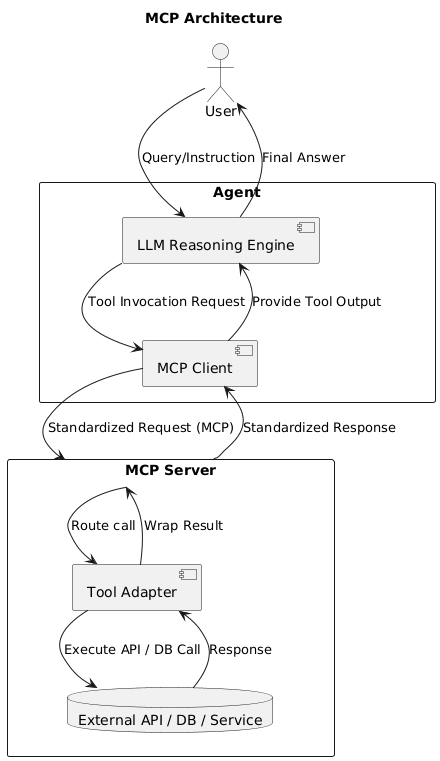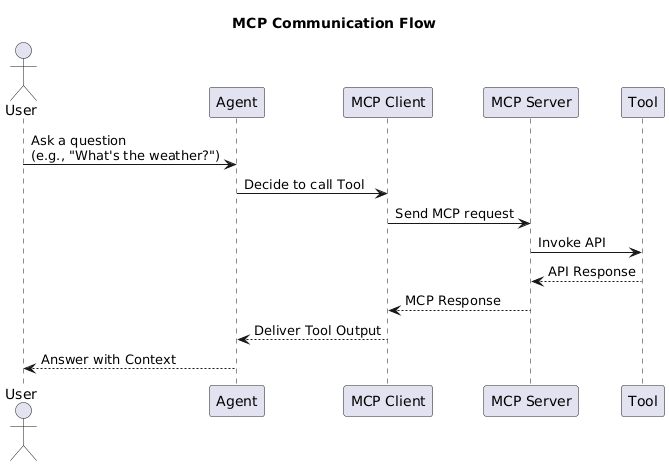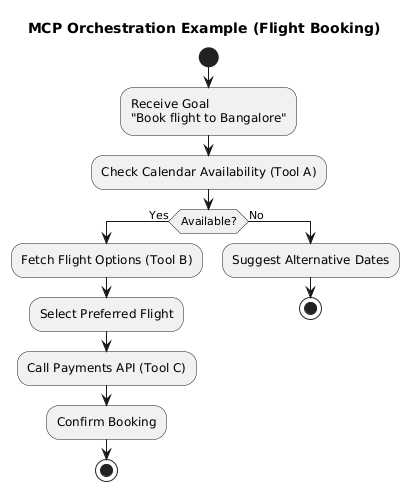Using MCP to Augment Agentic Capabilities
A Brief intro to MCP and where it fits in AI eco system
1. Agents and Tools
Agents
Software entities (like AI assistants) that can reason, decide, and act.
They have goals (e.g., book a ticket, answer a query) and use tools to achieve them.
Types:
Task agents → perform one-off tasks.
Conversational agents → interact with users over multiple turns.
Autonomous agents → plan and act continuously.
Tools
External systems/services agents use to execute actions.
Examples: Database queries, API calls (e.g., weather, stock prices), file systems, or LLM-powered functions.
Key idea: Agents are smarter when they can call tools.
2. API
Definition: Application Programming Interface – contract to interact with software systems.
Relevance to Agents:
Agents call APIs as tools to fetch or mutate data.
Well-defined APIs = predictable tool behavior.
Structure:
Endpoint (/weather/today)
Method (GET, POST)
Input/output (JSON schemas).
Example
GET /api/weather?city=Delhi
→ { "temp": 32, "condition": "Sunny" }3. Model Context Protocol (MCP)
Definition: An emerging open standard to define how AI models interact with external tools and data sources.
Purpose: Provide a consistent way for LLMs to “know” what context and capabilities are available.
Analogy: Like USB for AI tools – once defined, any agent can plug in.
Key Features:
Declares what tools exist (capabilities).
Defines how to call them (schemas).
Handles responses and error flows.
4. MCP Architecture
Components:
Agent – the reasoning engine (e.g., GPT model).
MCP Server – exposes tools & data sources in a standardized format.
MCP Client – resides with the agent, translates reasoning into tool invocations.
Transport Layer – channel (HTTP, WebSocket, gRPC).
High-level view:
Agent → MCP Client → MCP Server → Tool → MCP Server → MCP Client → Agent
5. MCP Communication Flow
Discovery
Agent loads MCP schema → learns what tools exist.
Invocation
Agent decides: “I need weather info.”
Sends structured request via MCP Client.
Execution
MCP Server calls the actual API/tool.
Response
Tool result is wrapped in MCP response → returned to agent.
Reasoning loop
Agent integrates response, continues plan.
Simplified sequence:
6. MCP Orchestration
Definition: Coordinating multiple tools, APIs, and workflows through MCP.
Example:
Goal = “Book me a flight to Bangalore tomorrow.”
Orchestration steps:
Call calendar API → check availability.
Call flights API → fetch options.
Call payments API → confirm booking.
MCP Role:
Ensures smooth chaining of tools.
Provides consistent error handling and retries.
Decouples agent logic from tool implementation.




